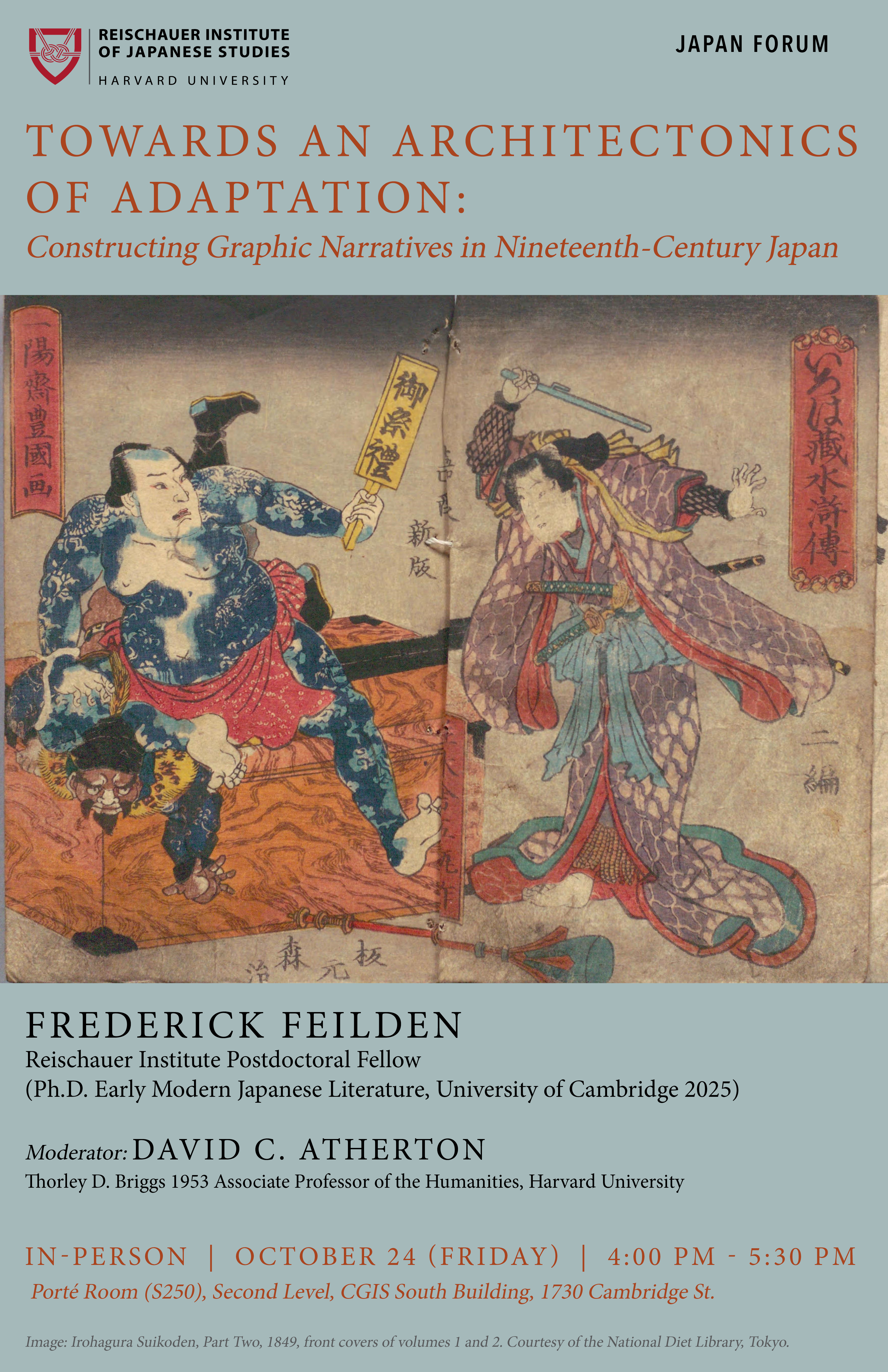Towards an Architectonics of Adaptation: Constructing Graphic Narratives in Nineteenth-Century Japan
Adaptation has the power to reshape the world as we know it, driving the transformation of lifeforms like us, as well as the tools we use and the works we create. For a striking example of a publishing ecology that revolved around the repurposing and reconstituting of pre-existing building blocks—from classical Japanese literature and Chinese vernacular epics, through to antiquarian scholarship and brand-new theatrical blockbusters—one need look no further than the competitive world of commercial literature during the last decades of the Edo period and the first phase of Meiji modernization.
This presentation addresses the dynamic circuit of production and consumption by looking through the prism of graphic narratives, specifically the serialized and eye-catching genre of illustrated book known as the gōkan, which delighted readers from the turn of the nineteenth century through to the 1880’s. In order to make sense of the savvy strategies on display, a new model will be introduced—an “architectonics” of adaptation—that connects up the structural principles used to construct gōkan with the rhetoric employed by writers and publishers to communicate those very techniques to a mass readership, and which, ultimately, limns the shifting socio-cultural conditions that allowed these strategies to flourish in the first place.
Reischauer Institute Japan Forum presentation
